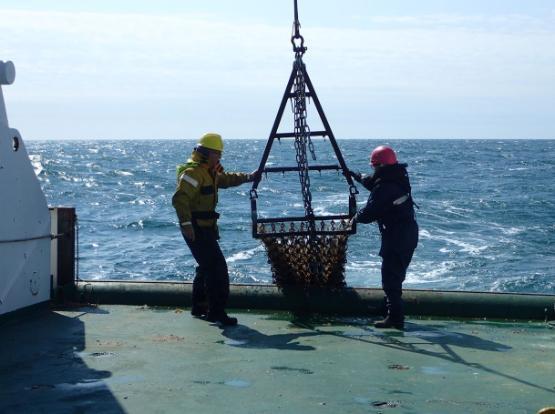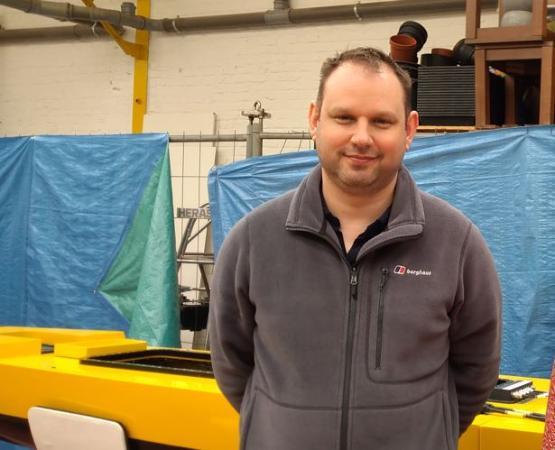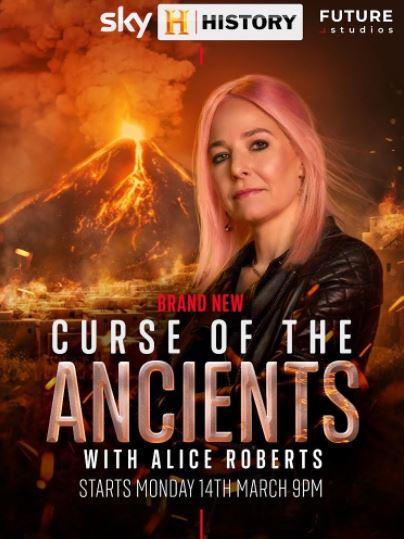UK’s renewed focus on energy security could lead to more archaeological discoveries under the North Sea

The UK’s renewed focus on energy security, brought about in part by the war in Ukraine, could lead to more archaeological discoveries under the North Sea, says one Bradford academic.
University of Bradford geoarchaeologist Dr Simon Fitch, currently appearing in Sky History’s Curse of the Ancients TV series, is part of a team of scientists reshaping how we view ancient history.
Dr Fitch, who works in the School of Archaeological and Forensic Sciences, regularly spends weeks at a time on boats trawling the depths of the North Sea in search of human - and other - artefacts. His work is focused on an area known as Doggerland, an ancient land mass lost to the waves some 6,700 years ago.
His work is part of the Europe’s Lost Frontiers project, which looks at how global warming at the end of the last ice age led to the inundation of vast landscapes that had once been home to thousands of people.
Dr Fitch says the Government’s push for off-shore wind farms could result in new underwater discoveries.
“There is a huge push to build off-short windfarms and a renewed focus on national and green energy security. That means companies will be undertaking more surveying and archaeology is part of that planning process.
“We have already discovered flint heads worked by humans from the bottom of the North Sea, we’ve even found a 10,000-year-old squirrel encased in peat, so we know there were plants and animals, and we know there were people.”

Dr Fitch appears in the first episode of the new Sky History TV series Curse of the Ancients, hosted by Alice Roberts, in which he discusses some of these findings.
“We discuss things such as the mapping process, how we go about determining what the underwater landscape of Doggerland looked like. We do that with seismic surveys, which gives us a very detailed view of the land, then use this information to guide us to take core samples. These samples allow us to determine things like what plants grew there, how warm it was, what the landscape was like, tidal patterns and so on.
“What’s interesting to me is finding out how people react to things like environmental stimuli. This is about understanding who we are, where we came from, and in doing so we can have a better understanding of how we might be in similar situations in the future.”
Dr Fitch cited sites such as the submerged Mesolithic landscape at Bouldnor Cliff, near the Isle of Wight, where signs of human habitation have been found, which demonstrate the potential for finding archaeological sites out at sea.
He added: “It’s vitally important that we undertake this work at this time, and indeed, we’re already working well with industry on this. Because at the moment, we have fragments, but through working with industry we will have a significant opportunity to advance our understanding of this fascinating archaeological jigsaw and a significant opportunity to advance our understanding of the past.”

Full List of episodes and transmission times in UK:
Episode 1: Ancient Global Warming - 14 March, 9pm
Episode 2: Rome's Rise and Fall - 21 March, 9pm
Episode 3: The Darkest Age - 28 March, 9p
Episode 4: God’s Holy Warriors - 4 April, 9pm
Episode 5: Medieval Mystery - 11 April, 9pm
Series link: https://www.history.co.uk/articles/curse-of-the-ancients-with-alice-roberts-episode-guide
